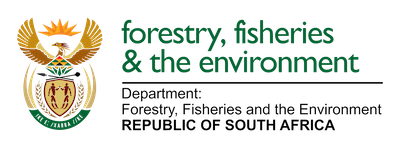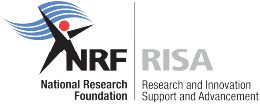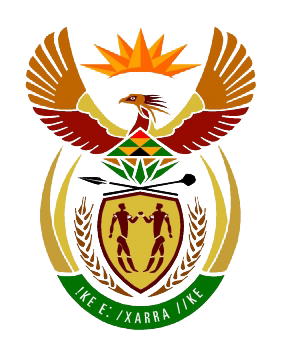
by Ria Olivier | Sep 17, 2024 | Announcement, Marion Island, Newsletters>Marion Island Newsletters
In this Issue of the Marion 81 Newsletter
Download The Wanderer
- A message from the Team Leader.
 “It’s a great honour and privilege to be M81 Team Leader. We are done with the first quarter of our expedition and so far everyone is doing well …… I want to express my gratitude to all those who are cheering us on in this journey; our families, our colleagues and our friends back home. It is not an easy journey but it is a rare and beautiful experience. With courage and determination we will continue and we will finish stronger than we started. “ Read more in the newsletter
“It’s a great honour and privilege to be M81 Team Leader. We are done with the first quarter of our expedition and so far everyone is doing well …… I want to express my gratitude to all those who are cheering us on in this journey; our families, our colleagues and our friends back home. It is not an easy journey but it is a rare and beautiful experience. With courage and determination we will continue and we will finish stronger than we started. “ Read more in the newsletter
- In a nutshell.
- An ode to Duct Tape.
- Meet the team.
- A true endemic – Marion’s flightless moth.
- How many people does it take to change a heater?
- A killer-whaler’s magical world.
- Explo Roundy! A new word for Island or Round Island exploration!
- A birder’s introduction.
- The ESSENTIAL guide to escaping a mire.
- World Albatross Day.
- An Over-island Tale.
- Lastly… a weather update by SAWS.
 Read the answers by team members to the following:
Read the answers by team members to the following:
 Why did you come to Marion?
Why did you come to Marion?- Best thing about Marion?
- What do you miss the most?
- Worst thing about Marion?
- What do you wish you had brought?
- What is the best food here?
- What food do you miss?
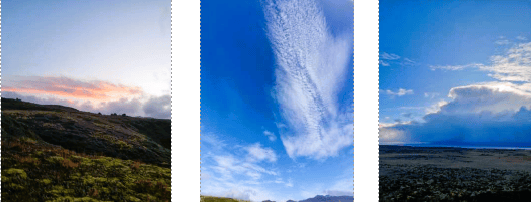 Weather on Marion Island
Weather on Marion Island
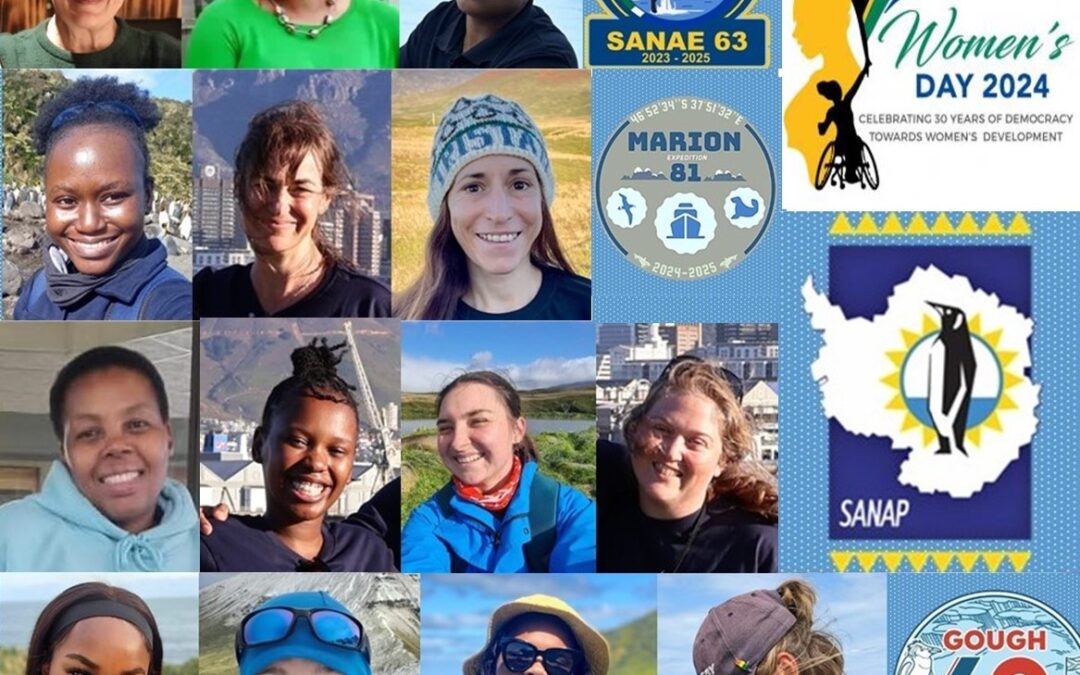
by Ria Olivier | Aug 9, 2024 | Antarctica, APECSSA, Commemorative Days, Gough Island, Legacy, Marion Island, Overwintering Team, Research, SANAE IV, SANAP
Theme of the National Women’s Day Commemoration:
“Celebrating 30 Years of Freedom Towards Women’s Development”
 In the SANAP community we are celebrating all those involved as Researchers, Scientists, and Students at tertiary and research institutions and infrastructures, and personnel within the National Research Foundation, the Department of Forestry, Fisheries and the Environment, the Department of Public works and Infrastructure, the South African Weather Services, the South African National Space Agency, the South African Polar Research Infrastructure and all the women serving as part of the crew of the S.A. Agulhas II.
In the SANAP community we are celebrating all those involved as Researchers, Scientists, and Students at tertiary and research institutions and infrastructures, and personnel within the National Research Foundation, the Department of Forestry, Fisheries and the Environment, the Department of Public works and Infrastructure, the South African Weather Services, the South African National Space Agency, the South African Polar Research Infrastructure and all the women serving as part of the crew of the S.A. Agulhas II.
 Celebrating our women overwintering team members at our stations: Antarctica (SANAEIV), Marion Island and Gough Island.
Celebrating our women overwintering team members at our stations: Antarctica (SANAEIV), Marion Island and Gough Island.
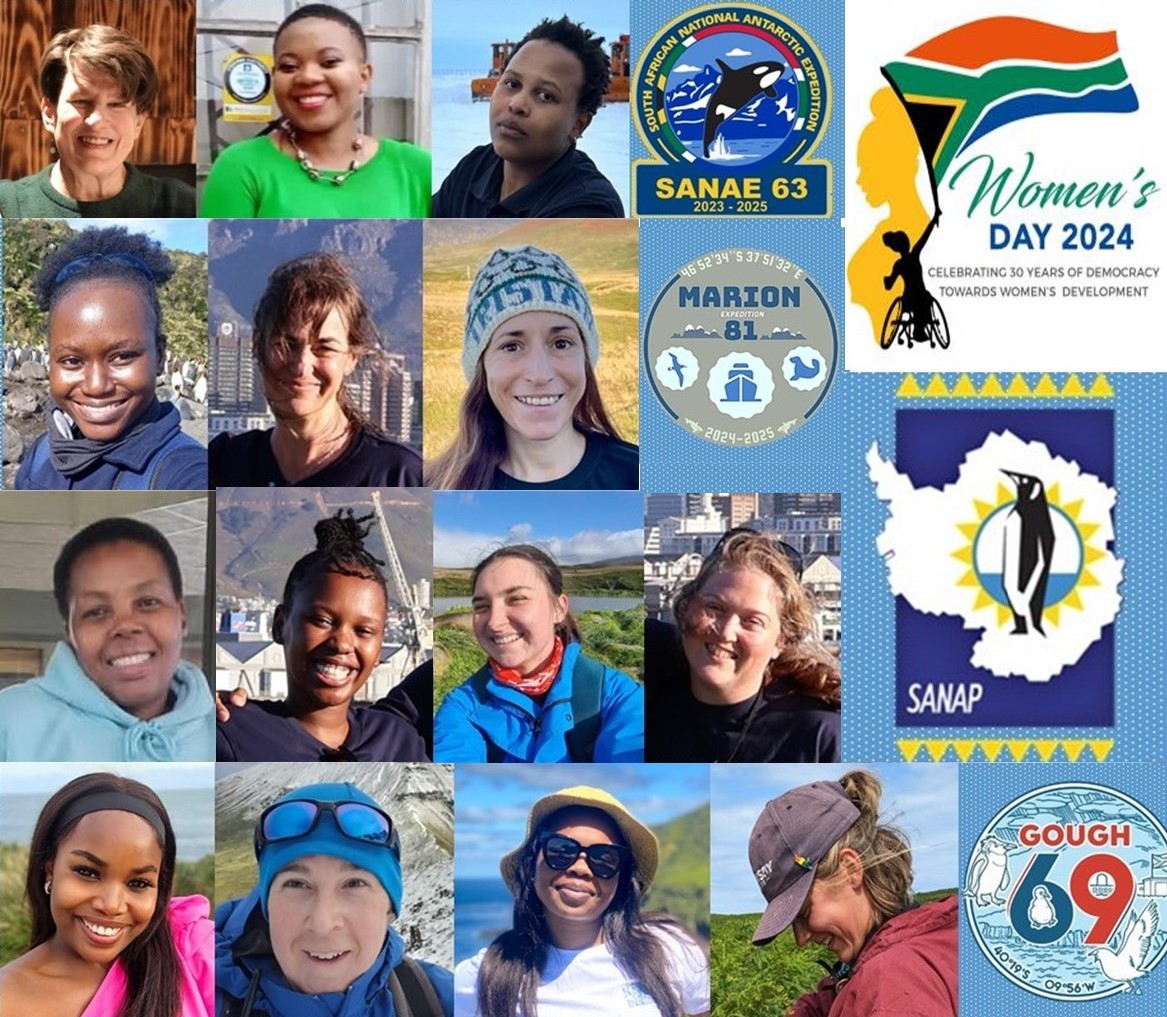 2024 women’s day commemoration is a reminder of the important contributions that are made by women to society, as well as a time to reflect on the advances in women’s rights. During 30 years of democracy, South Africa has made significant strides in advancing gender equality in all domains of society, including economic empowerment of women.
2024 women’s day commemoration is a reminder of the important contributions that are made by women to society, as well as a time to reflect on the advances in women’s rights. During 30 years of democracy, South Africa has made significant strides in advancing gender equality in all domains of society, including economic empowerment of women.
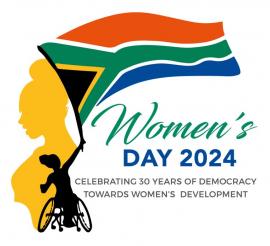 Women’s Day 2024 is the first national day led by the Government of National Unity (GNU) and takes place in a rural community as part of including all South Africans in national events, and placing a focus on the achievements and needs of women in all corners of the country. President Cyril Ramaphosa is expected to officiate the national Women’s Day commemoration in Pofadder in the Namakwa District, Northern Cape. – SAnews.gov.za
Women’s Day 2024 is the first national day led by the Government of National Unity (GNU) and takes place in a rural community as part of including all South Africans in national events, and placing a focus on the achievements and needs of women in all corners of the country. President Cyril Ramaphosa is expected to officiate the national Women’s Day commemoration in Pofadder in the Namakwa District, Northern Cape. – SAnews.gov.za
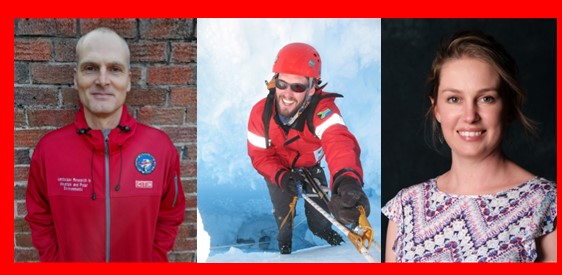
by Ria Olivier | Jul 1, 2024 | Geomorphology, Marion Island, Research, SANAP, Science
Twenty‐thousand‐year gap between deglaciation and peat formation on sub‐Antarctic Marion Island attributed to climate and sea level change
 Article published by Werner Nel, Dominic Hodgson, David Hedding, Alex Whittle and Elizabeth Rudolph
Article published by Werner Nel, Dominic Hodgson, David Hedding, Alex Whittle and Elizabeth Rudolph
Full Article Available Here
Radiocarbon dating of basal peats has been a key factor in determining minimum ages for deglaciation on sub‐Antarctic islands. On Marion Island, peat bogs dominate the landscape below 300m a.s.l., and palynological assessments of peat cores have been used to assess the vegetation history and succession rates as well as the sensitivity of the indigenous flora to climatic change. Initiation of peat on the sub‐Antarctic islands signifies a major landscape change which has previously been linked to the retreat of glaciers. Here we test this hypothesis by comparing previously published and new basal peat ages from Marion Island with cosmogenic isotope dates for deglaciation, and local and regional palaeo‐environmental changes. Results show that, in common with other sub‐Antarctic islands, peat initiation occurred after the Antarctic Cold Reversal (15–13 ka) and through the early Holocene climate optimum. This substantially postdates cosmogenic isotope evidence for deglaciation from the basalts which shows that the areas where the peatlands dominate were ice‐free from the start of Marine Isotope Stage (MIS) 2 (~31 ka). This suggests that environmental conditions controlled peat initiation rather than deglaciation. Regional climatic proxies show that during and after MIS 2, extremely low temperatures, extensive sea ice conditions and depressed sea surface temperatures together with lower sea levels at an island scale could have maintained conditions unfavourable for peat initiation at their current locations. On Marion Island, the significant gap of ~20 000 years between the timing of deglaciation and peat formation indicates that the use of peat basal ages as a proxy for the minimum age of deglaciation in the sub‐Antarctic should be used with extreme caution.
 Left( Werner Nel, David Hedding and Elizabeth Rudolph)
Left( Werner Nel, David Hedding and Elizabeth Rudolph)
© 2024 The Author(s). Journal of Quaternary Science Published by John Wiley & Sons Ltd.
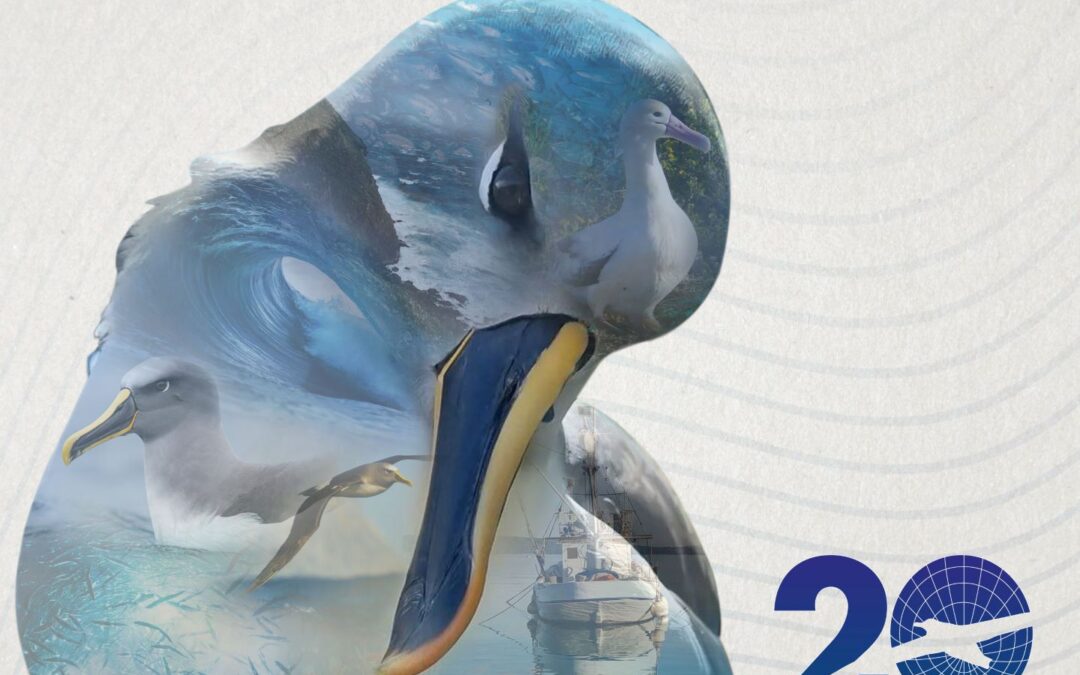
by Ria Olivier | Jun 19, 2024 | International Days, Invasion Biology, Marine Protected Area, Marion Island, Prince Edward Islands
Dance of the Albatross
The dance of the Albatross. Video made by Anche Louw on 16 April 2016 on Marion Island at Swartkops.
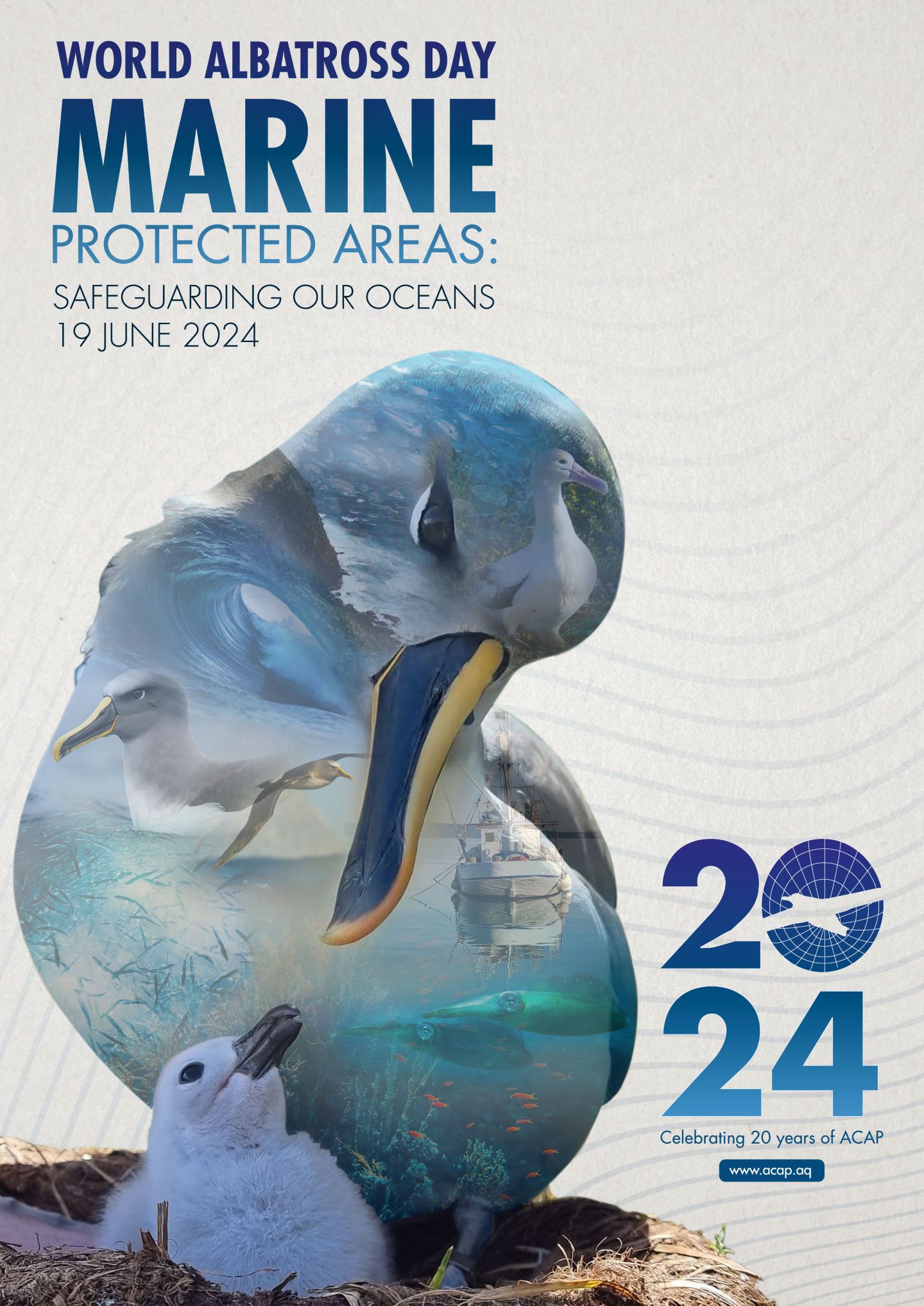 The Agreement on the Conservation of Albatrosses and Petrels (ACAP) has announced that “Marine Protected Areas – Safeguarding our Oceans” is to be its theme for this year’s World Albatross Day (WAD2024) on 19 June. “Albatrosses are the ultimate ocean wanderers, spending most of their lives at sea traversing vast distances across the globe in search of food such as fish, squid and krill. This year, World Albatross Day will focus on the connection between albatrosses and the ocean and highlight how MPAs can help improve the conservation status of these magnificent birds.” – ACAP
The Agreement on the Conservation of Albatrosses and Petrels (ACAP) has announced that “Marine Protected Areas – Safeguarding our Oceans” is to be its theme for this year’s World Albatross Day (WAD2024) on 19 June. “Albatrosses are the ultimate ocean wanderers, spending most of their lives at sea traversing vast distances across the globe in search of food such as fish, squid and krill. This year, World Albatross Day will focus on the connection between albatrosses and the ocean and highlight how MPAs can help improve the conservation status of these magnificent birds.” – ACAP
Help Saving Marion Island’s Seabirds. Donate now.
The WAD2024 poster was created by South African born Graphic Designer and long-time ACAP collaborator, Geoff Tyler, who also designed ACAP’s World Albatross Day logo, including this year’s commemorative logo marking the Agreement’s 20th year since coming into force.
Feature photo form video clip made by Anche Louw (22 April 2016)
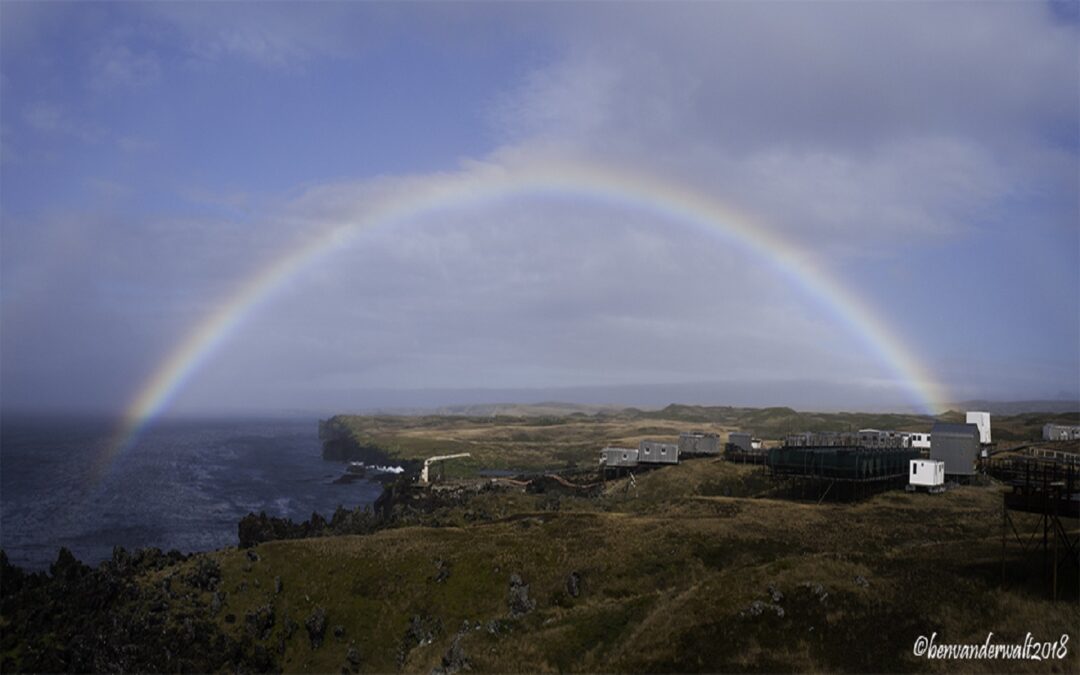
by Ria Olivier | Jun 5, 2024 | Announcement, Environment, International Days, Marion Island
On this World Environment Day we focus on Marion Island as the #generationrestoration highlights the importance of the Mouse-Free Marion Project
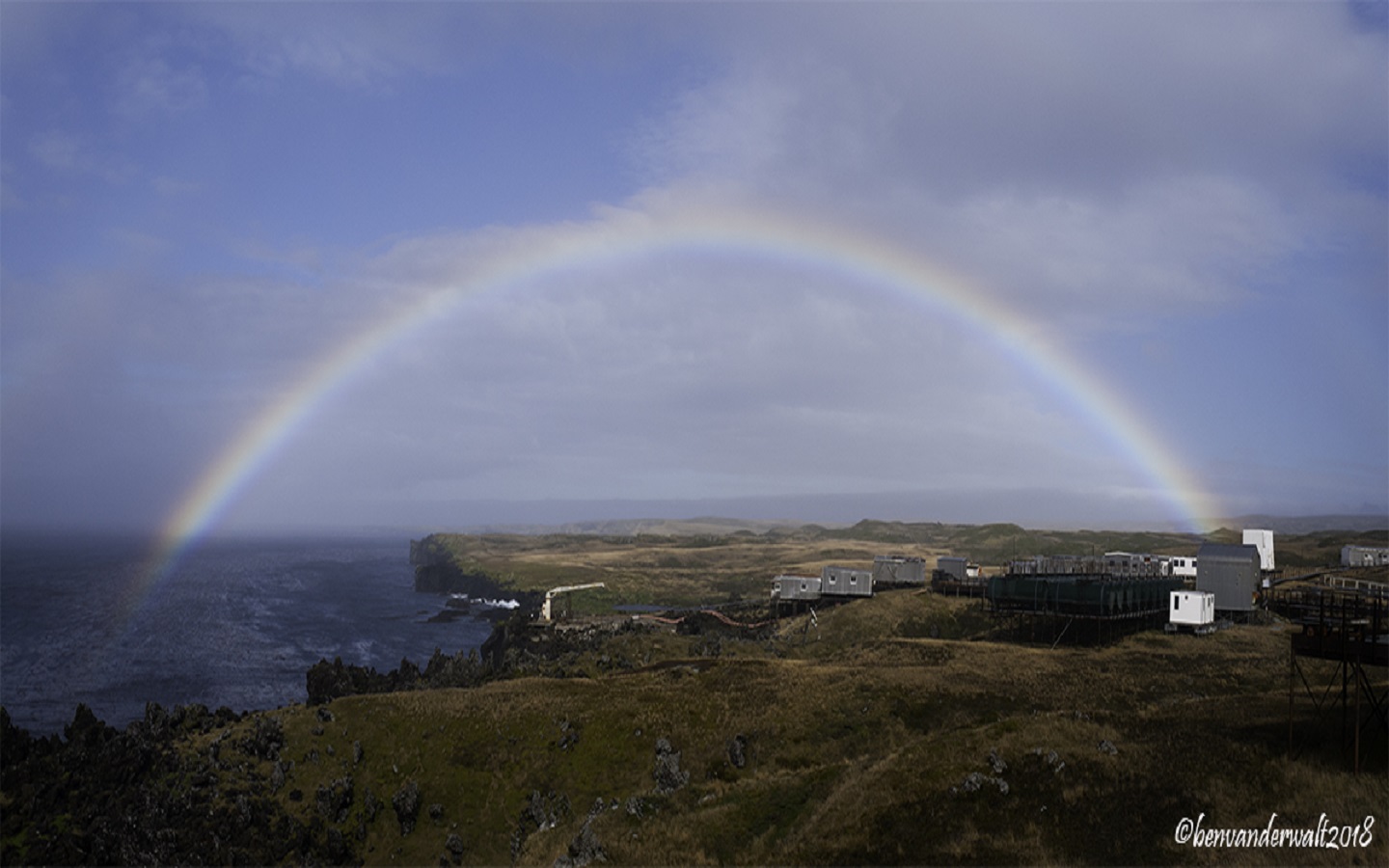 Marion Island and Prince Edward Island, collectively known as the Prince Edward Islands, are tiny specks of land in the Southern Ocean, the huge body of water that encircles the Antarctic Continent. Marion Island is the larger of the two islands, with an area of just under 300 square kilometres, whereas Prince Edward Island is considerably smaller – a mere 45 square kilometres. With a summit of 1 230 metres Marion Island is also much higher than the 672-metre high Prince Edward Island. The two islands are close neighbours, with only 19 kilometres of relatively shallow water separating them.
Marion Island and Prince Edward Island, collectively known as the Prince Edward Islands, are tiny specks of land in the Southern Ocean, the huge body of water that encircles the Antarctic Continent. Marion Island is the larger of the two islands, with an area of just under 300 square kilometres, whereas Prince Edward Island is considerably smaller – a mere 45 square kilometres. With a summit of 1 230 metres Marion Island is also much higher than the 672-metre high Prince Edward Island. The two islands are close neighbours, with only 19 kilometres of relatively shallow water separating them.
 The Prince Edward Islands, together with the other islands within the Southern Ocean, form part of a complex and productive ecosystem that has far-reaching influences. In turn the ocean dominates many aspects of the islands, from the way the vegetation grows to climate and geomorphology. The islands rose above the surface of the ocean after a prolonged period of underwater volcanic activity and the rocks and many of the landscapes reflect these tumultuous beginnings. From the jagged, almost surreal expanse of the black lava fields, to the many red scoria cones that dot the landscape, these volcanic origins are responsible for some of the most striking natural features of the islands. Despite the fact that today, researchers and managers visit them every year the islands still remain one of the wildest places on earth.
The Prince Edward Islands, together with the other islands within the Southern Ocean, form part of a complex and productive ecosystem that has far-reaching influences. In turn the ocean dominates many aspects of the islands, from the way the vegetation grows to climate and geomorphology. The islands rose above the surface of the ocean after a prolonged period of underwater volcanic activity and the rocks and many of the landscapes reflect these tumultuous beginnings. From the jagged, almost surreal expanse of the black lava fields, to the many red scoria cones that dot the landscape, these volcanic origins are responsible for some of the most striking natural features of the islands. Despite the fact that today, researchers and managers visit them every year the islands still remain one of the wildest places on earth.
 Text from: Publication Marion and the Prince Edward.
Text from: Publication Marion and the Prince Edward.
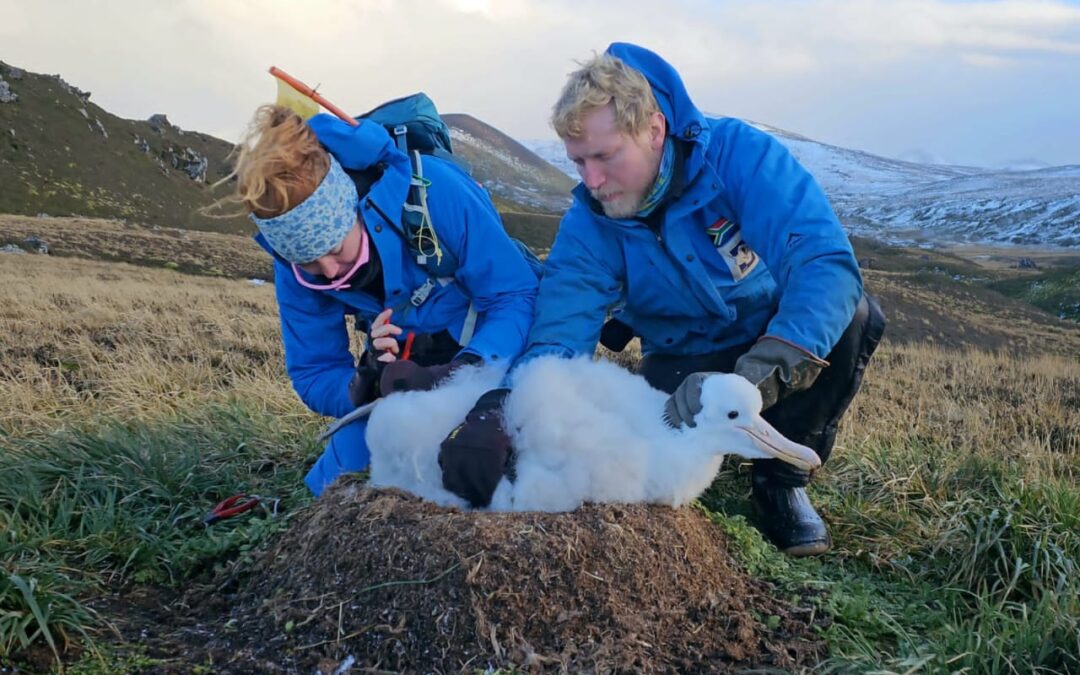
by Ria Olivier | Apr 29, 2024 | Marion Island, Research, Take-Over Operations, Uncategorised
Marion Island Take-Over 2024 Ornithology Projects: Avian scavengers as indicators of recovery of an island biota and the FitzPatrick long-term monitoring of Albatross and Giant Petrels.
The activities during the take-over 2024 will be divided into (1) completing the activities of the 2021/23 SANAP project on avian scavengers, and (2) ensuring the smooth passing of the FitzPatrick Institute seabird long-term monitoring on to the South African Polar Research Infrastructure (SAPRI).
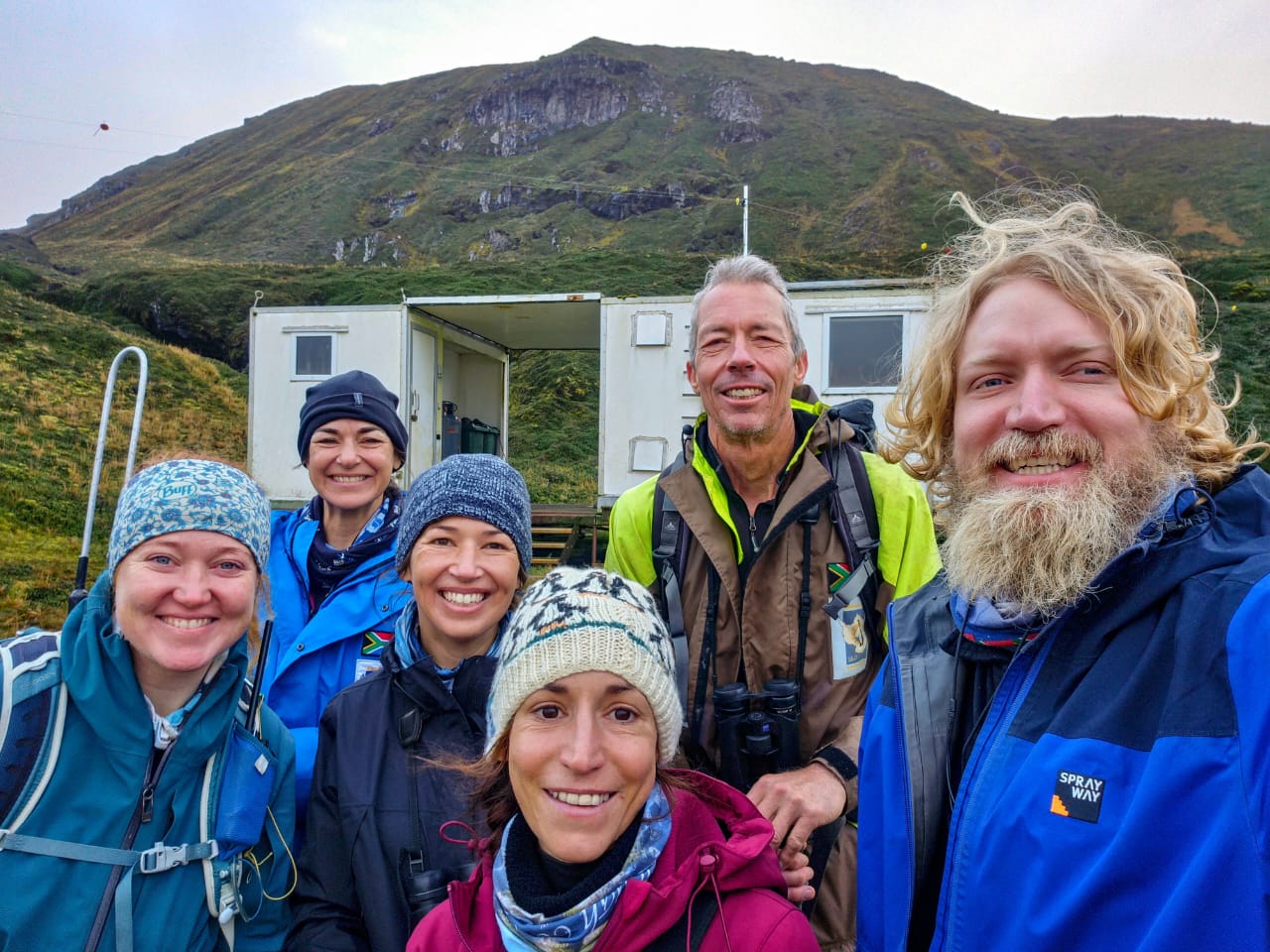 ABOVE: Michelle Jones (M80), Vanessa Steven (M81), Prof Susie Cunningham (UCT FitzPatrick PI), Rhiannon Gill (M81), Prof Peter Ryan (UCT FitzPatrick), Chris Jones (M80)
ABOVE: Michelle Jones (M80), Vanessa Steven (M81), Prof Susie Cunningham (UCT FitzPatrick PI), Rhiannon Gill (M81), Prof Peter Ryan (UCT FitzPatrick), Chris Jones (M80)
Avian scavengers as indicators of recovery of an island biota : Since 2021, our SANAP project focussed on the three poorly known avian scavengers: Brown Skua, Kelp Gull, Black-faced Sheathbill, as well as some of the skua’s prey, the burrowing seabird species. Our project filled identified scientific gaps that were crucial for best planning of the mouse eradication and development of appropriate mitigation measures, and established baselines for the scavenger guild and their prey base against which the impact of a successful mouse eradication can be measured in years to come. The takeover 2024 will see the closure of this project that we are aiming to restart at the time of the mouse eradication.
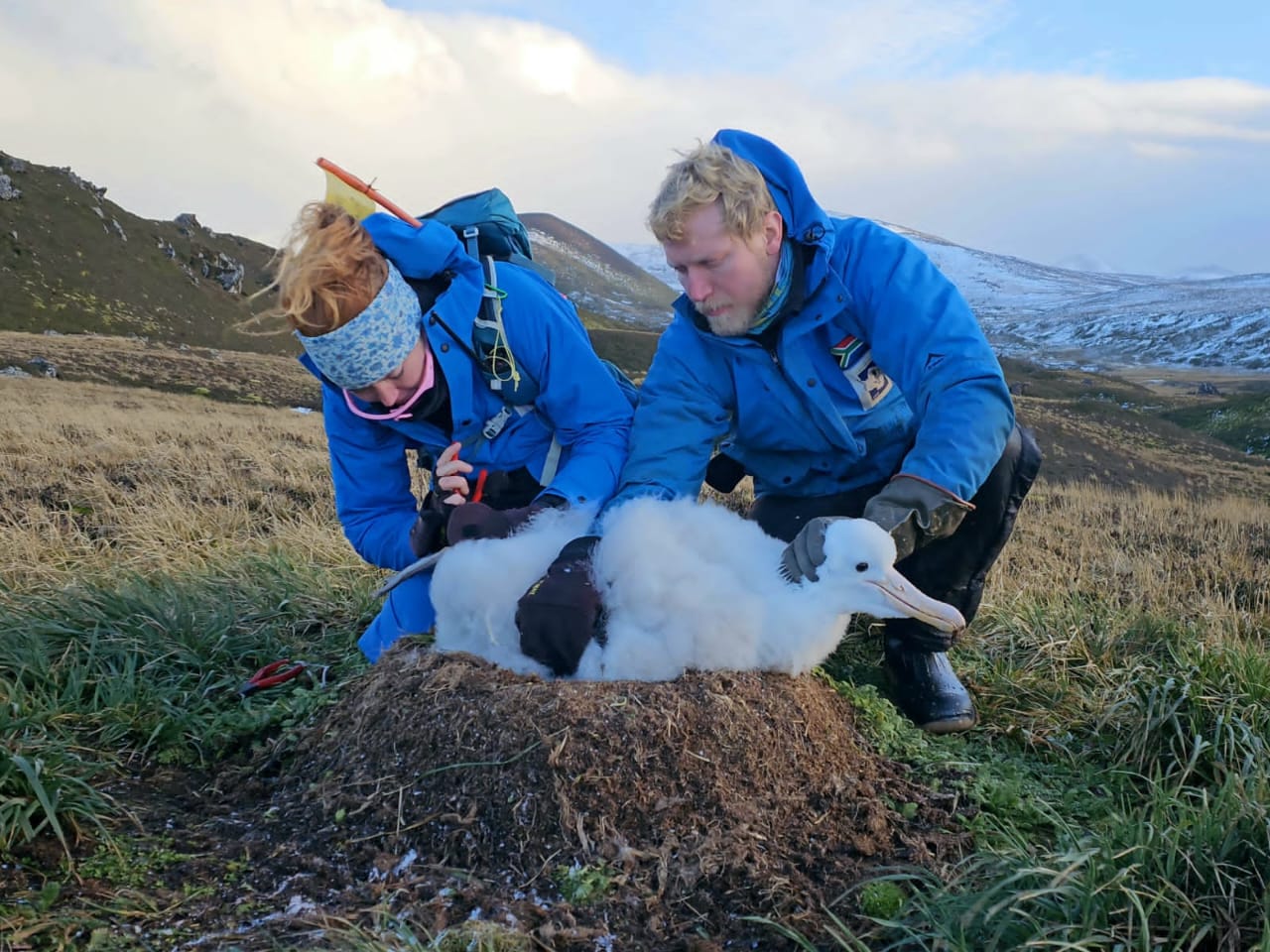
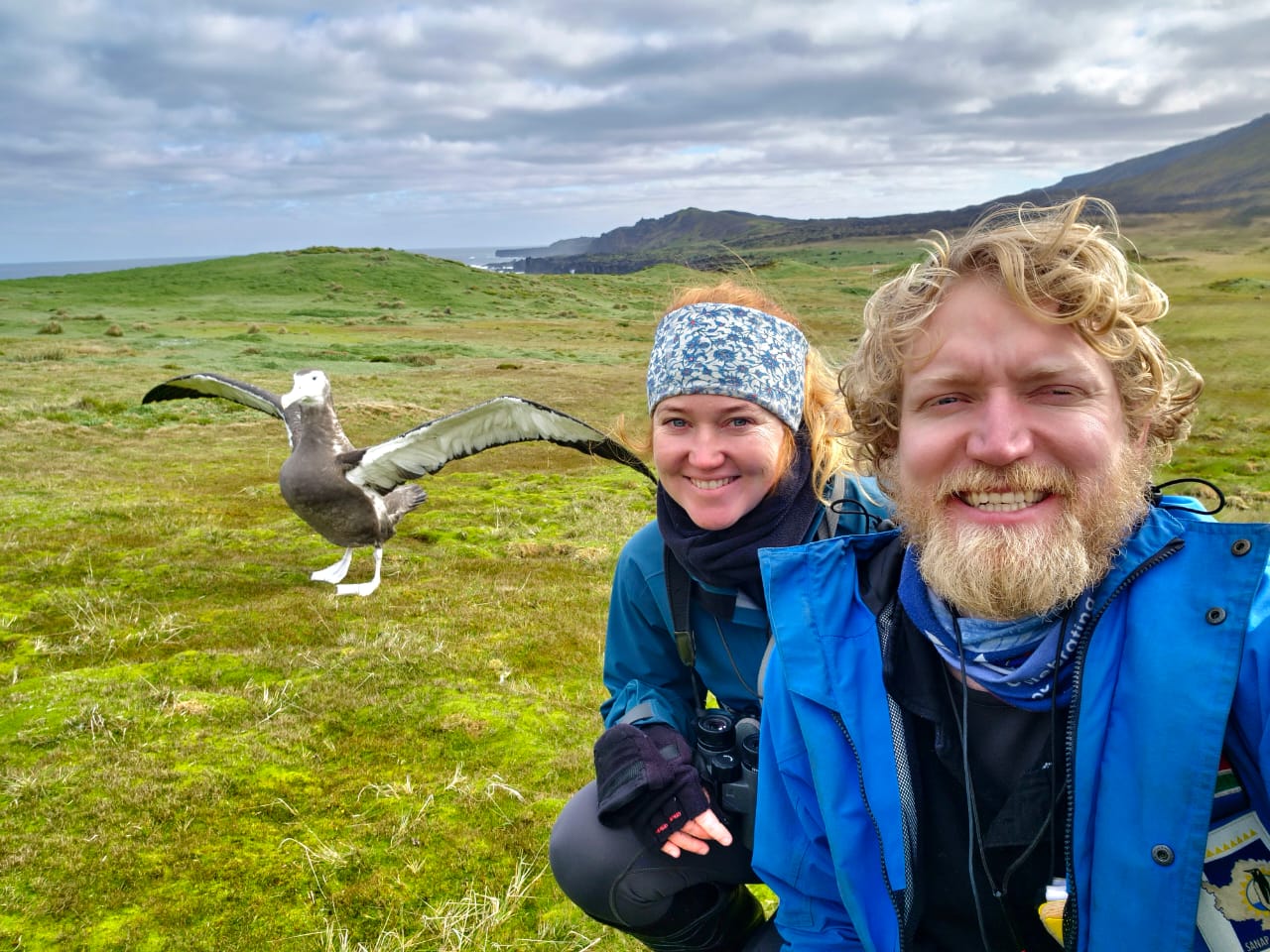 Above: Chris and Michelle Jones working with the Wandering Albatross during overwinter period
Above: Chris and Michelle Jones working with the Wandering Albatross during overwinter period
The FitzPatrick long-term monitoring of Albatross and Giant Petrels: The long-term demography monitoring of Wandering and Grey-headed Albatrosses and Northern Giant Petrels at Marion Island was started by the FitzPatrick Institute of African Ornithology (UCT) in the early 1980s. To ensure its continuity for years to come, it will become SAPRI’s responsibility from April/May 2024. In the forthcoming takeover, all information regarding the monitoring will be passed on to SAPRI to ensure the continuity in the data collected. Further, the annual whole island count of Grey-headed Albatross fledglings will be conducted and Wandering Albatrosses will be carefully checked to detect any potential mouse injuries that were first detected in breeding adults in April 2023.
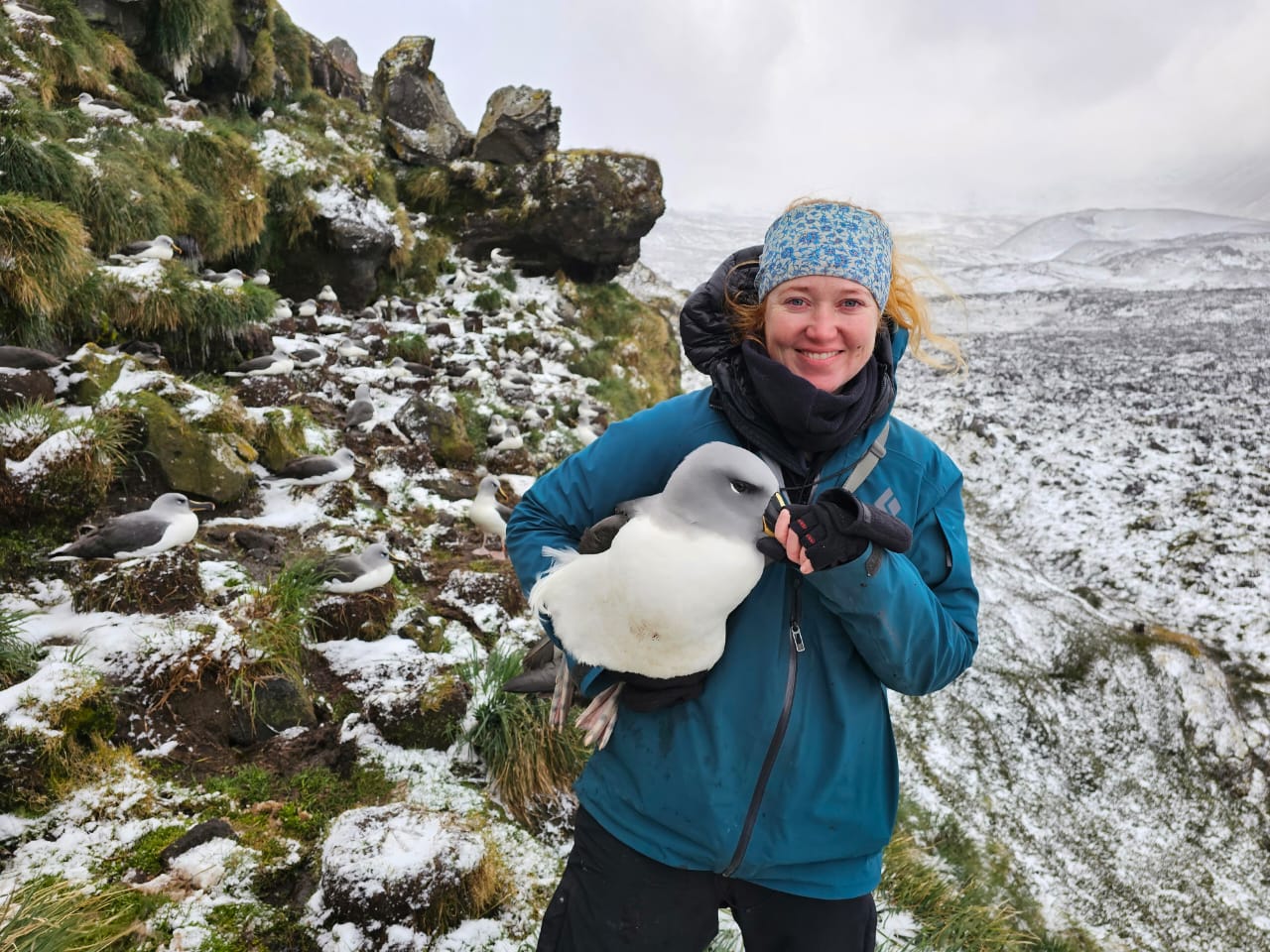
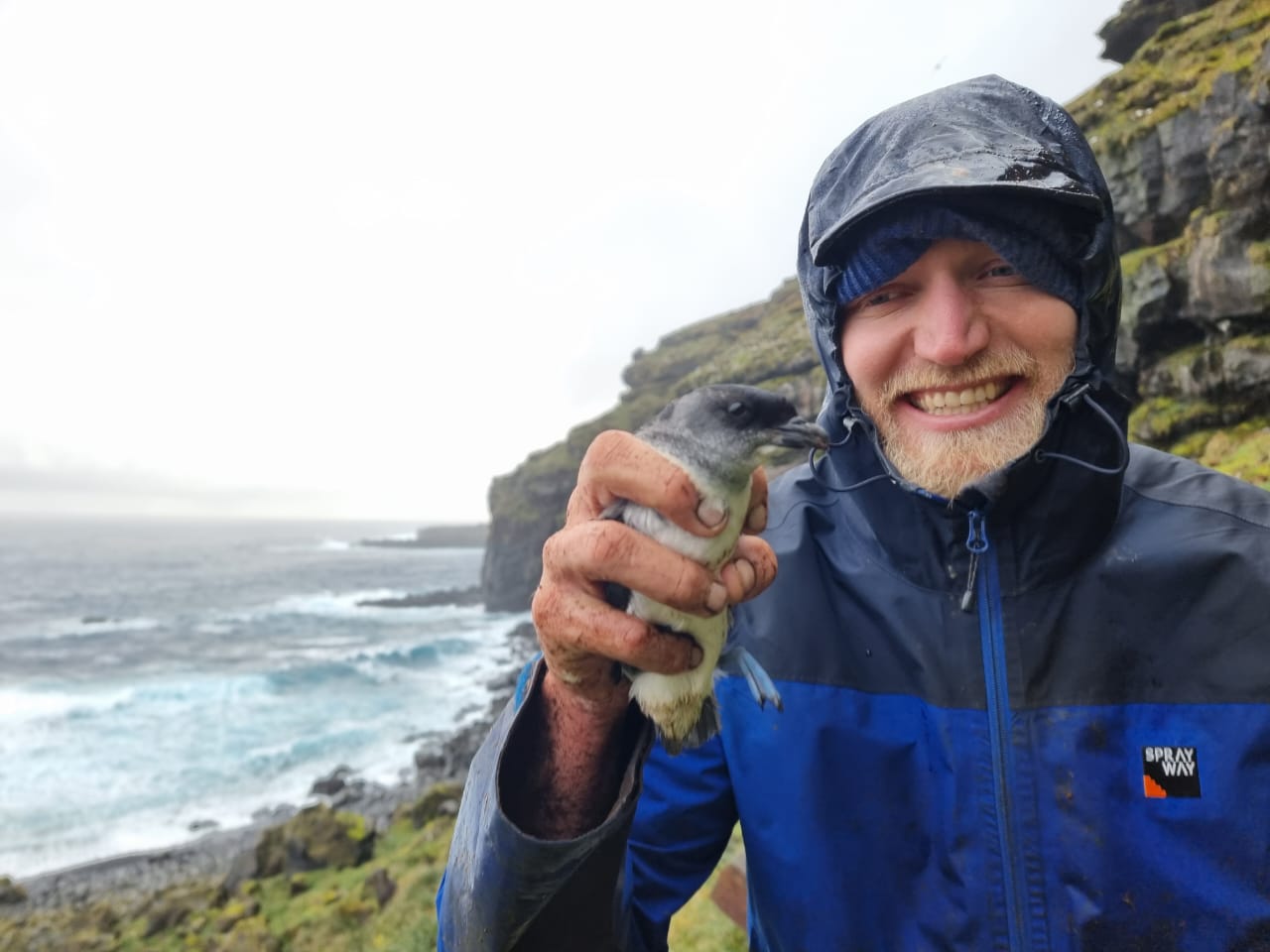 (left) Michelle Jones with Grey-headed Albatross and (right) Chris Jones with Common Diving Petrel
(left) Michelle Jones with Grey-headed Albatross and (right) Chris Jones with Common Diving Petrel
Principal Investigators
Take-Over Research team
Overwintering team 2023/24:
- Michelle Risi Jones (NMU/SAPRI)
- Christopher Jones (NMU)
- Text: Dr Maelle Connan
- Images : Chris and Michelle Jones

 “It’s a great honour and privilege to be M81 Team Leader. We are done with the first quarter of our expedition and so far everyone is doing well …… I want to express my gratitude to all those who are cheering us on in this journey; our families, our colleagues and our friends back home. It is not an easy journey but it is a rare and beautiful experience. With courage and determination we will continue and we will finish stronger than we started. “ Read more in the newsletter
“It’s a great honour and privilege to be M81 Team Leader. We are done with the first quarter of our expedition and so far everyone is doing well …… I want to express my gratitude to all those who are cheering us on in this journey; our families, our colleagues and our friends back home. It is not an easy journey but it is a rare and beautiful experience. With courage and determination we will continue and we will finish stronger than we started. “ Read more in the newsletter Read the answers by team members to the following:
Read the answers by team members to the following: Why did you come to Marion?
Why did you come to Marion? Weather on Marion Island
Weather on Marion Island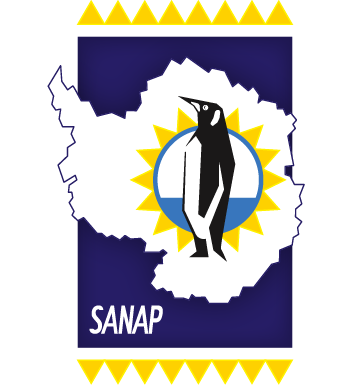

 In the SANAP community we are celebrating all those involved as Researchers, Scientists, and Students at tertiary and research institutions and infrastructures, and personnel within the National Research Foundation, the Department of Forestry, Fisheries and the Environment, the Department of Public works and Infrastructure, the South African Weather Services, the South African National Space Agency, the South African Polar Research Infrastructure and all the women serving as part of the crew of the S.A. Agulhas II.
In the SANAP community we are celebrating all those involved as Researchers, Scientists, and Students at tertiary and research institutions and infrastructures, and personnel within the National Research Foundation, the Department of Forestry, Fisheries and the Environment, the Department of Public works and Infrastructure, the South African Weather Services, the South African National Space Agency, the South African Polar Research Infrastructure and all the women serving as part of the crew of the S.A. Agulhas II. Celebrating our women overwintering team members at our stations: Antarctica (SANAEIV), Marion Island and Gough Island.
Celebrating our women overwintering team members at our stations: Antarctica (SANAEIV), Marion Island and Gough Island. 2024 women’s day commemoration is a reminder of the important contributions that are made by women to society, as well as a time to reflect on the advances in women’s rights. During 30 years of democracy, South Africa has made significant strides in advancing gender equality in all domains of society, including economic empowerment of women.
2024 women’s day commemoration is a reminder of the important contributions that are made by women to society, as well as a time to reflect on the advances in women’s rights. During 30 years of democracy, South Africa has made significant strides in advancing gender equality in all domains of society, including economic empowerment of women. Women’s Day 2024 is the first national day led by the Government of National Unity (GNU) and takes place in a rural community as part of including all South Africans in national events, and placing a focus on the achievements and needs of women in all corners of the country. President Cyril Ramaphosa is expected to officiate the
Women’s Day 2024 is the first national day led by the Government of National Unity (GNU) and takes place in a rural community as part of including all South Africans in national events, and placing a focus on the achievements and needs of women in all corners of the country. President Cyril Ramaphosa is expected to officiate the 
 Article published by Werner Nel, Dominic Hodgson, David Hedding, Alex Whittle and Elizabeth Rudolph
Article published by Werner Nel, Dominic Hodgson, David Hedding, Alex Whittle and Elizabeth Rudolph
 The Agreement on the Conservation of Albatrosses and Petrels (ACAP) has announced that “Marine Protected Areas – Safeguarding our Oceans” is to be its theme for this year’s
The Agreement on the Conservation of Albatrosses and Petrels (ACAP) has announced that “Marine Protected Areas – Safeguarding our Oceans” is to be its theme for this year’s 
 Marion Island and Prince Edward Island, collectively known as the Prince Edward Islands, are tiny specks of land in the Southern Ocean, the huge body of water that encircles the Antarctic Continent. Marion Island is the larger of the two islands, with an area of just under 300 square kilometres, whereas Prince Edward Island is considerably smaller – a mere 45 square kilometres. With a summit of 1 230 metres Marion Island is also much higher than the 672-metre high Prince Edward Island. The two islands are close neighbours, with only 19 kilometres of relatively shallow water separating them.
Marion Island and Prince Edward Island, collectively known as the Prince Edward Islands, are tiny specks of land in the Southern Ocean, the huge body of water that encircles the Antarctic Continent. Marion Island is the larger of the two islands, with an area of just under 300 square kilometres, whereas Prince Edward Island is considerably smaller – a mere 45 square kilometres. With a summit of 1 230 metres Marion Island is also much higher than the 672-metre high Prince Edward Island. The two islands are close neighbours, with only 19 kilometres of relatively shallow water separating them. The Prince Edward Islands, together with the other islands within the Southern Ocean, form part of a complex and productive ecosystem that has far-reaching influences. In turn the ocean dominates many aspects of the islands, from the way the vegetation grows to climate and geomorphology. The islands rose above the surface of the ocean after a prolonged period of underwater volcanic activity and the rocks and many of the landscapes reflect these tumultuous beginnings. From the jagged, almost surreal expanse of the black lava fields, to the many red scoria cones that dot the landscape, these volcanic origins are responsible for some of the most striking natural features of the islands. Despite the fact that today, researchers and managers visit them every year the islands still remain one of the wildest places on earth.
The Prince Edward Islands, together with the other islands within the Southern Ocean, form part of a complex and productive ecosystem that has far-reaching influences. In turn the ocean dominates many aspects of the islands, from the way the vegetation grows to climate and geomorphology. The islands rose above the surface of the ocean after a prolonged period of underwater volcanic activity and the rocks and many of the landscapes reflect these tumultuous beginnings. From the jagged, almost surreal expanse of the black lava fields, to the many red scoria cones that dot the landscape, these volcanic origins are responsible for some of the most striking natural features of the islands. Despite the fact that today, researchers and managers visit them every year the islands still remain one of the wildest places on earth. Text from: Publication Marion and the Prince Edward.
Text from: Publication Marion and the Prince Edward. 
 ABOVE: Michelle Jones (M80), Vanessa Steven (M81), Prof Susie Cunningham (UCT FitzPatrick PI), Rhiannon Gill (M81), Prof Peter Ryan (UCT FitzPatrick), Chris Jones (M80)
ABOVE: Michelle Jones (M80), Vanessa Steven (M81), Prof Susie Cunningham (UCT FitzPatrick PI), Rhiannon Gill (M81), Prof Peter Ryan (UCT FitzPatrick), Chris Jones (M80)
 Above: Chris and Michelle Jones working with the Wandering Albatross during overwinter period
Above: Chris and Michelle Jones working with the Wandering Albatross during overwinter period
 (left) Michelle Jones with Grey-headed Albatross and (right) Chris Jones with Common Diving Petrel
(left) Michelle Jones with Grey-headed Albatross and (right) Chris Jones with Common Diving Petrel
